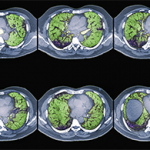Moving Forward
To improve understanding and acceptance of a UCTD diagnosis, the Barbara Volcker Center at the Hospital for Special Surgery (HSS), New York, has created a prospective Undifferentiated Connective Tissue Disease and Overlap Registry that systematically reviews medical records of patients with UCTD to verify they do not meet ACR/EULAR-endorsed classification criteria for SLE, SSc, RA, Sjögren’s, inflammatory myopathy or antiphospholipid syndrome, then annually collects clinical data and biologic samples.1
Identification of demographic and medical factors, as well as defining molecular phenotypes in patients with UCTD, may improve diagnostic accuracy and risk stratification. The main goals are to correlate UCTD clinical and biomarker phenotypes, track disease evolution, predict conversion to a named CTD and compare the psychosocial well-being of patients with UCTD to that of patients with SLE.
In its short life, our registry has enrolled more than 250 patients (96% female, 74% white, mean age at enrollment 47.2 years +/-14.3) with rheumatologist diagnosed UCTD whom we predict will answer our initial questions. A preliminary cohort analysis found that nearly a third of our patients with rheumatologist-diagnosed UCTD fulfilled ACR/EULAR-endorsed classification criteria for a CTD, highlighting issues of diagnostic ambiguity: Rheumatologists diagnose patients with UCTD even when they meet criteria for a CTD.16
We plan to continue collecting annual follow-up data on the subset of patients in our cohort with UCTD (currently >150). We expect these large-scale efforts will identify which factors predict which patients will remain stable and which will evolve, reducing the uncertainty of UCTD and improving patient care.
In addition to these research efforts, the Barbara Volcker Center at HSS sponsored a conference on uncertainty in April 2021, When a Diagnosis Has No Name. The two-day, international workshop offered participants from all areas of medicine—patient care, basic and clinical research, industry, federal regulatory agencies, insurers, administrators, and patients—the opportunity to discuss and analyze perspectives on diagnostic uncertainty.
The conference was a first step in deconstructing concepts of diagnostic uncertainty, bringing patients who are often excluded from research to the forefront of the conversation and building a common vocabulary to quantify uncertainty. A resulting summary paper outlines the workshop’s main discussion points, conclusions and recommendations.9 The resulting textbook, Diagnoses Without Names provides more detailed accounts of workshop participants’ data and perspectives on diagnostic uncertainty.17
Moving forward, clear criteria for UCTD are vital for refining research, enhancing diagnostic precision, and improving patient care. We hope to see advancements in the management and understanding of UCTD that lead to improved patient outcomes and reduced uncertainty in the field of rheumatology.

